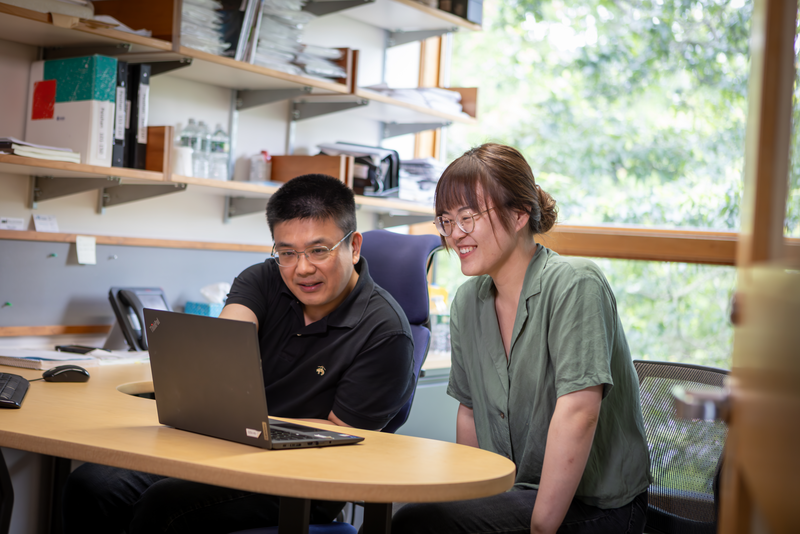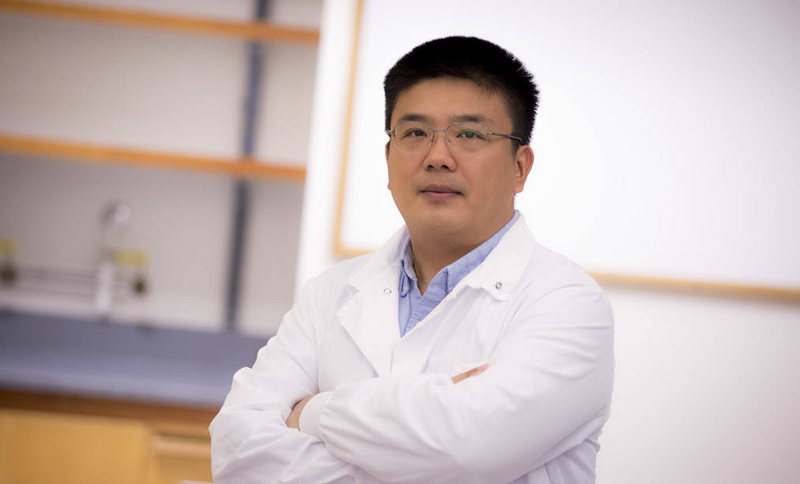JAX Associate Professor Guangwen “Gary” Ren with Chaojia Chen, a postdoctoral associate in his lab.
The seed and the soil: Utilizing mouse models to understand metastasis spread
Article | May 4, 2025
As any gardener can tell you, planting a seed isn’t enough to guarantee a flower will grow. Water, sun, and soil conditions all impact whether the seed thrives or dies. The same, it turns out, is true for cancer cells.
Most cancer deaths are due to metastasis—the process in which cancer cells break away from the original tumor, travel through the body, and form new tumors in other organs. But that actual process isn’t a straightforward one for the cells. Many cancer seeds spread from the original tumor, but few survive enough to make new tumors of their own.
JAX Associate Professor Guangwen “Gary” Ren is working to uncover what happens inside these organs that allows cancer cells to grow and spread.
Unraveling the roots of metastasis
Metastasis is not well studied because it’s hard to get the evidence of early-stage metastasis in humans. Cancer cells can lay dormant for years before showing signs of tumor growth. That’s why mouse models are a powerful tool—they allow the scientists to study the full complexity of the metastatic process, including interactions between tumor cells, the stromal cells that make up the organ’s connective tissue cells, and the body’s immune cells.
Ren and his team inject breast cancer cells into the mammary gland of healthy mice and then study the changes in the distant organs before metastasis, during the spread, and once new tumors form. Their current focus is on breast cancer that metastasizes to the lungs, which is a common place of metastasis for most cancers.
“For me, it’s intriguing. A primary tumor spreads to the organ, so we have to understand why this organ can become a favorite site for the tumor to be there,” says Ren. “What’s happening in the stromal and immune cells for this cancer to be there and grow?”
Looking beyond the tumor
The team uses live imaging, single cell sequencing, and a series of advanced techniques and focuses on the organ host cells, not just the tumor cells. How do the conditions in this new “soil” micro-environment affect the cancer cells’ ability to seed, survive, and proliferate new tumor growth in the lung.
JAX also has strains of genetically-engineered mice that can spontaneously develop tumors. Ren says studies on those mice, which they also utilize, are directly relevant to cancer patients. Those transgenic mice have mutations, which cause them to grow tumors and mutations are why humans develop cancer as well.
“Currently we’re focused on the lung microenvironment and lung metastasis, but in the future we may move from the lung to other major sites of breast cancer metastasis—the liver, brain or bone,” says Ren.
The long-term goal? To take what they’ve learned from these models and come up with a way to target the stromal cells to treat metastasis in humans before it becomes lethal.


